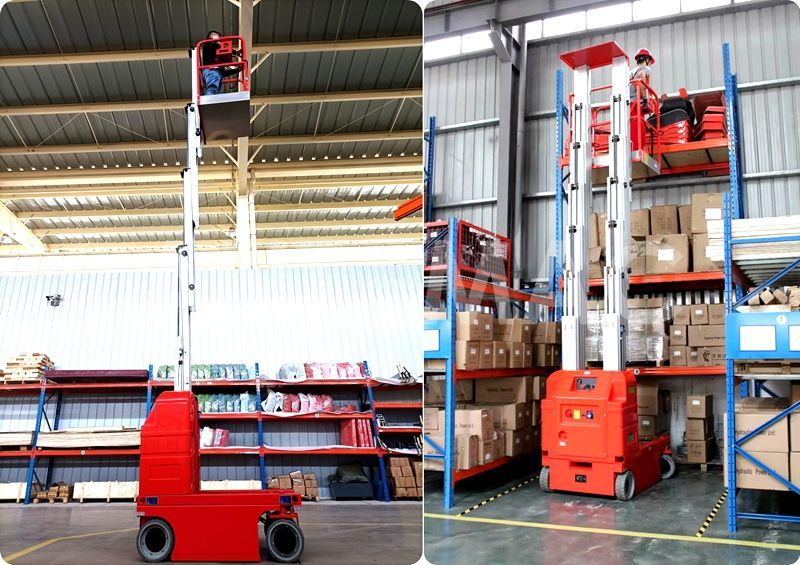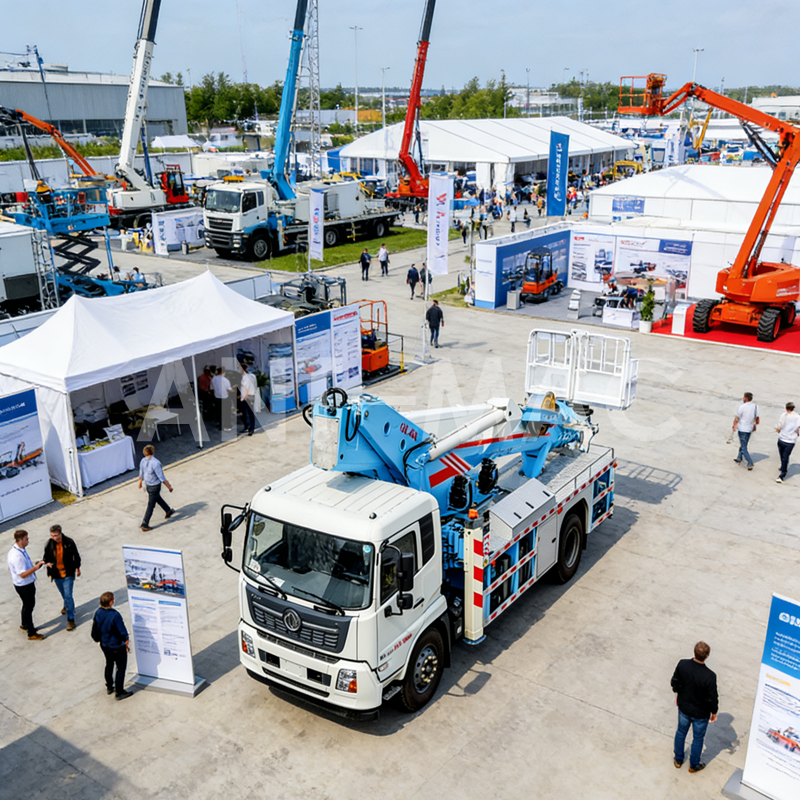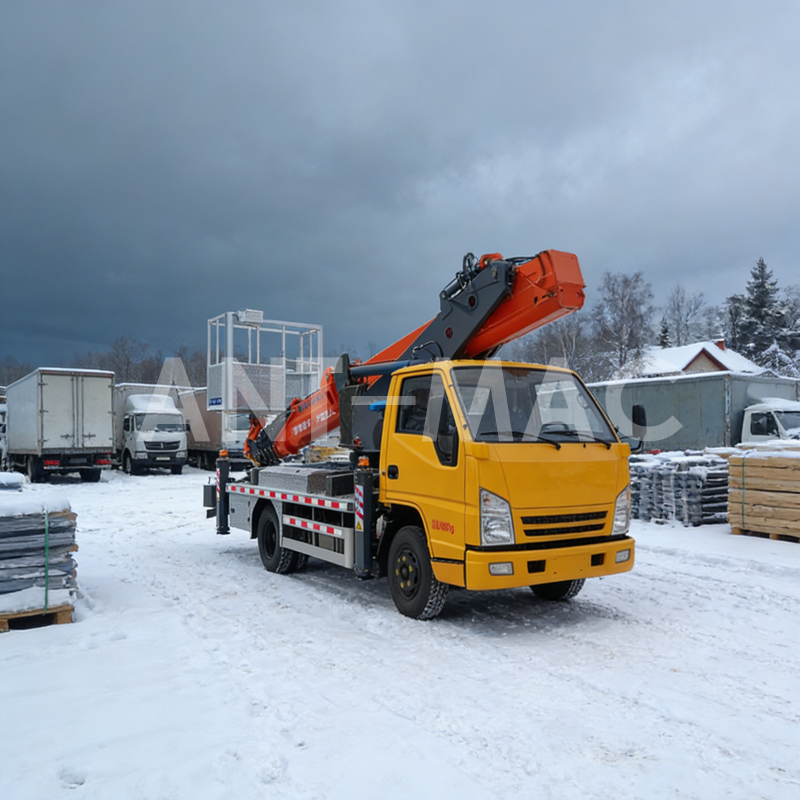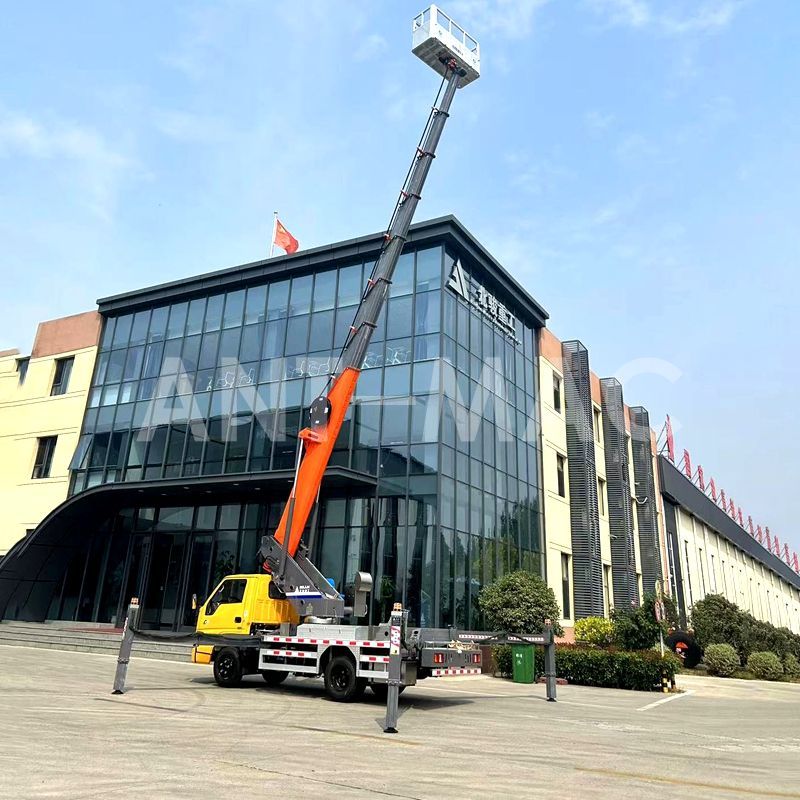Selection of Self-Propelled Mast Aerial Work Platforms: Core Differences Between Single and Double Masts
When purchasing aerial work equipment, the choice between single-mast and double-mast self-propelled mast lifts often leaves decision-makers puzzled — both use aluminum masts, so why the huge gaps in price and performance? This article dissects their core differences across four dimensions (structural design, performance boundaries, scenario adaptation, and cost logic), combining real-world operation scenarios and parameter data to help enterprises solve selection challenges.
1. Structural DNA: Single Mast (Lightweight Penetration) vs Double Mast (Stable Framework)
Single mast: The “Narrow Space Intruder”
Single-mast models adopt a single vertical mast design, featuring ultra-compact dimensions (typical: L 1300-1500mm, W 700-800mm, H 1800-2000mm). Paired with swivel casters and a narrow chassis, they enable:
Elevator-friendly mobility: With a width under 800mm, they effortlessly pass through standard hotel/supermarket elevators (car width ≥1000mm).
Tight-space maneuvering: Navigate flexibly around factory equipment gaps or mall display areas, even working close to walls (e.g., mast positioned just 10cm from walls for light fixture repairs).
Double mast: The “Stability Anchor”
Double-mast models rely on symmetrical dual-mast linkage support, distributing loads via synchronized lifting. This delivers two key advantages:
Platform expansion: Platforms typically reach 1000×650mm (vs. 600×550mm for single masts), accommodating tools, materials, and workers simultaneously.
Stability upgrade: The triangular support structure reduces swing amplitude to ≤5mm (vs. ≥8mm for single masts), boosting anti-tip capability by 40% during heavy loads or slope operations.
2. Performance Boundaries: Agility vs Load Capacity
Load Capacity: Precision vs Breakthrough
Single mast: Focuses on 100–150kg light loads (e.g., single worker + small tools), ideal for hotel chandelier replacement or signage installation.
Double mast: Breaks the 200–300kg heavy-load barrier (e.g., the ATWP2-7.5-C model handles 200kg), covering factory equipment installation (with heavy tools) and airport bridge maintenance (multi-tool collaboration).
Mobility vs Stability: Efficiency vs Safety
Single mast: Boasts a minimum turning radius ≤500mm (can pivot in place) but requires speed reduction on complex terrain (e.g., 15° slopes) to avoid shaking.
Double mast: Has a larger turning radius (≥1200mm, reducing agility) but excels in stability: it climbs 25% slopes (≈14°) smoothly, and its pothole protection system triggers at just 15cm drops.

3. Scenario Breakthroughs: From Space Limits to Industry Fit
Single Mast: Dominates “Light Load + Tight Spaces”
Commercial services: Hotel ceiling light maintenance (elevator access + wall-proximal work) or supermarket shelf cleaning (navigates narrow aisles, servicing 10 floors daily).
Precision operations: Lab equipment debugging (low vibration) or museum display lighting maintenance (small size avoids disrupting exhibits).
Double Mast: Controls “Heavy Load + Wide Areas”
Industrial manufacturing: 5–10m pipe installation in factories (carrying 200kg welders + pipes, stable via dual masts) or new energy plant inspections (large platform for testing gear).
Municipal engineering: 9.5m streetlight repair (e.g., ATWP2-7.5-C, dual-mast wind resistance) or viaduct gap repair (climbs 25% slopes with ease).
4. Cost Trade-offs: Short-Term Savings vs Long-Term Value
Procurement Cost: Single Mast as a Cost-Effective Entry
Single masts use 30% less material (simpler structure), costing 20–30% less than double masts at the same height — perfect for budget-conscious, light-load users.
Total Cost of Ownership: Double Mast’s Durability Edge
Maintenance: Dual masts distribute hydraulic pressure, extending seal lifespan by 30% and cutting annual maintenance costs by 15%.
Service life: Single masts last 5–8 years in light loads; double masts, with stronger fatigue resistance, survive 8–10 years in heavy, frequent use — making them cheaper long-term.
Selection Formula: “3 Scenario Factors” to Decide
Enterprises can judge via load demand × space constraints × operation frequency:
Choose single mast: If load ≤150kg, narrow spaces (e.g., elevators/corridors) are key, and daily moves ≥5 times (e.g., commercial services).
Choose double mast: If load ≥200kg, heavy industrial/municipal work, or complex terrain (e.g., slopes/potholes) dominate.
The debate between single and double masts in self-propelled mast aerial work platforms boils down to a trade-off between “agile penetration” and “stable load capacity”. When selecting, ask: Does your scenario prioritize breaking space limits or ensuring heavy-load safety? Clarity here maximizes equipment efficiency.
 In-depth Analysis of Return on
In-depth Analysis of Return on
 A Cost-Effectiveness Revolutio
A Cost-Effectiveness Revolutio
 2026 Trend Insights: Four Core
2026 Trend Insights: Four Core
 Five Criteria for Selecting Re
Five Criteria for Selecting Re
 Russian
Russian
